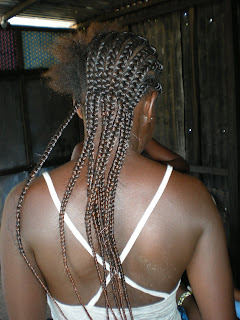On April 19th, we participated with HPP and the local NGO in the symbolic distribution of the latrines to the community. HPP has organized the community into 5 blocks with committees and an overall committee for the project. These committees will supervise the hygiene training.
This is a demontration latrine to show the people what they will need to do.
Our site monitor, Bombyck, designed a "post hole digger" to assist as people dig through the compressed sand. Those pictured are upside down.
This hole is about deep enough, but not wide enough for good sanitation.
The local NGO, UNIVADE, was trained to produce the 8,000 latrine slabs.
Each slab has a cover for protection from flying insects.
The truck delivering the wood necessary to brace the latrine slabs struggled on the wet, sandy roads. The first delivery was of poor wood, so Bomcyck took the 12 hour trip to hand pick wood from the lumber yard in Matadi.
Still working on the treatment of the wood!
The ceremonial presentation of slabs was made to the heads of each committee.
At the ceremony, one latrine slab was placed.
Finished
The new latrine is located behind this house.
The committee heads are very happy.
A ceremonial (thank heavens) demonstration -- life here requires good knees.























































